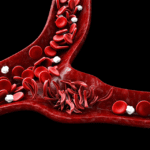Investigating Youth Suicides Among Children Involved With the Welfare System
Investigating Youth Suicides Among Children Involved With the Welfare System https://pediatricsnationwide.org/wp-content/uploads/2019/05/AdobeStock_69121448-1024x683.jpg 1024 683 Natalie Wilson Natalie Wilson https://pediatricsnationwide.org/wp-content/uploads/2021/06/Natalieheadshot3-2.png- March 08, 2021
- Natalie Wilson

Youth with child welfare involvement are at an elevated risk for suicide but may benefit from suicide prevention interventions targeting health care settings and family-preservation.
Suicide is the second leading cause of death among youth aged 5 to 21 years in the United States. Between 2010 and 2019, suicide rates among this group increased 40%.
Youth involved in the child welfare system experience an even greater risk of suicidal behavior, yet research on this vulnerable population is minimal.
To better understand and prevent suicide in this at-risk group, researchers at Nationwide Children’s Hospital conducted the first study to compare characteristics and health service utilization patterns of youth suicide decedents (those who died by suicide) and non-decedents who were involved with the child welfare system.
The study, published in Pediatrics and supported by a grant from the National Institute of Mental Health (NIMH), found that youth with child welfare system involvement who died by suicide were significantly more likely to experience out-of-home placements (with the frequency and length of those placements strongly predicting suicidal behavior), more likely to have been diagnosed with mental health and chronic medical conditions or substance use disorders and more likely to have visited physical and mental health care settings in the months before their deaths than matched controls.
Researchers studied 1,320 young people aged 5 to 21 who had at least one open case in Ohio’s Statewide Automated Child Welfare Information System (SACWIS) between 2010 and 2017, matching 120 cases of youth who died by suicide to 10 non-decedent controls each based on sex, race, ethnicity, age and year of open case. The study sample was 66% male, 63% non-Hispanic White, 25% non-Hispanic Black and 4% Hispanic. Nearly half of those studied were 15-19 years old when their SACWIS case was opened (44%), with an average age of 15 years.
Youth who died by suicide were twice as likely to have accessed mental health services in the one month and six months prior to their deaths than controls, regardless of the health care setting. Nearly half of suicide decedents with child welfare system involvement used some type of health care services in the one month prior to their death, and almost 90% did so in the preceding six months, compared to 69% of controls. In fact, the odds of a mental health visit in any period or setting were significantly greater for the youth in the child welfare system who died by suicide.
A higher incidence of mental health diagnoses among all youth who died by suicide may account for these findings.
Previous research has found that over 90% of all youth who died by suicide had a mental health condition. In this study, however, 59% of suicide decedents had a diagnosed mental health condition compared to less than a third of the control group (31%).
“These findings raise potential concerns about the quality and consistency of mental health screening and care for youth in the welfare system,” says Donna Ruch, PhD, a research scientist in the Center for Suicide Prevention and Research and the study’s lead author. “They also validate growing recommendations to screen for suicide risk in health care settings. Given the nature of child welfare system involvement, where children are in contact with varied service providers, integrating suicide prevention strategies as a core component of health care delivery in these settings is important.”
Additionally, although the number of open SACWIS cases did not significantly differ between suicide decedents and non-decedent controls, those who died by suicide were significantly more likely to have been removed from their homes and placed in foster care, kinship care or another alternative setting.
“Our research suggests youth with child welfare involvement may benefit from both suicide prevention strategies targeting health care settings, such as the Zero Suicide approach, and those that align with family preservation programs,” says Dr. Ruch.
Future research to explore and provide empirical support for these kinds of interventions is critical to reduce suicide deaths in this vulnerable population.
—
If you or your child are feeling suicidal, talk to someone. Call the National Suicide Prevention Lifeline at 1-800-273-TALK (8255) or the Youth Psychiatric Crisis Line for Franklin County residents at (614) 722-1800; connect to the Lifeline Crisis Chat at crisischat.org; or reach the Crisis Text Line by texting “START” (or in Ohio, “4HOPE”) to 741-741.
If you ever have immediate/urgent concerns about your safety or the safety of anyone else, call 911.
If you believe an overdose has occurred, call the national Poison Help hotline at 1-800-222-1222.
Among children and young adults ages 5-21, warning signs of suicide can vary. Information about suicide warning signs, resources for suicide prevention and resources for families, including those who have lost a loved one to suicide, are available at NationwideChildrens.org.
Recommendations for reporting on suicide can be found here: mha.ohio.gov/suicidereporting.
Reference:
Ruch DA, Steelesmith DL, Warner LA, Bridge JA, Campo JV, Dunn A, Fontanella CA. Health services use by children in the welfare system who died by suicide. Pediatrics. 2021 March 8. [Epub ahead of print]
About the author
Natalie is a passionate and enthusiastic writer working to highlight the groundbreaking research of the incredible faculty and staff across Nationwide Children's Hospital and the Abigail Wexner Research Institute. Her work at Nationwide Children's marries her past interests and experiences with her passion for helping children thrive and a long-held scientific curiosity that dates back to competing in the Jefferson Lab Science Bowl in middle school. Natalie holds a bachelor’s degree in sociology from Wake Forest University, as well as minors in women's, gender & sexuality studies and interdisciplinary writing. As an undergraduate student, Natalie studied writing and journalism, engaged with anthropological and sociological research with a focus on race and ethnic relations, served as executive editor for the student newspaper, the Old Gold & Black, and gained marketing experience as an intern for a nonprofit entrepreneurial incubator, Winston Starts, as well as by working for Wake Forest University School of Law Office of Communication and Public Relations and its Innocence and Justice Clinic.
-
Natalie Wilsonhttps://pediatricsnationwide.org/author/natalie-wilson/
-
Natalie Wilsonhttps://pediatricsnationwide.org/author/natalie-wilson/
-
Natalie Wilsonhttps://pediatricsnationwide.org/author/natalie-wilson/
-
Natalie Wilsonhttps://pediatricsnationwide.org/author/natalie-wilson/
- Posted In:
- In Brief










